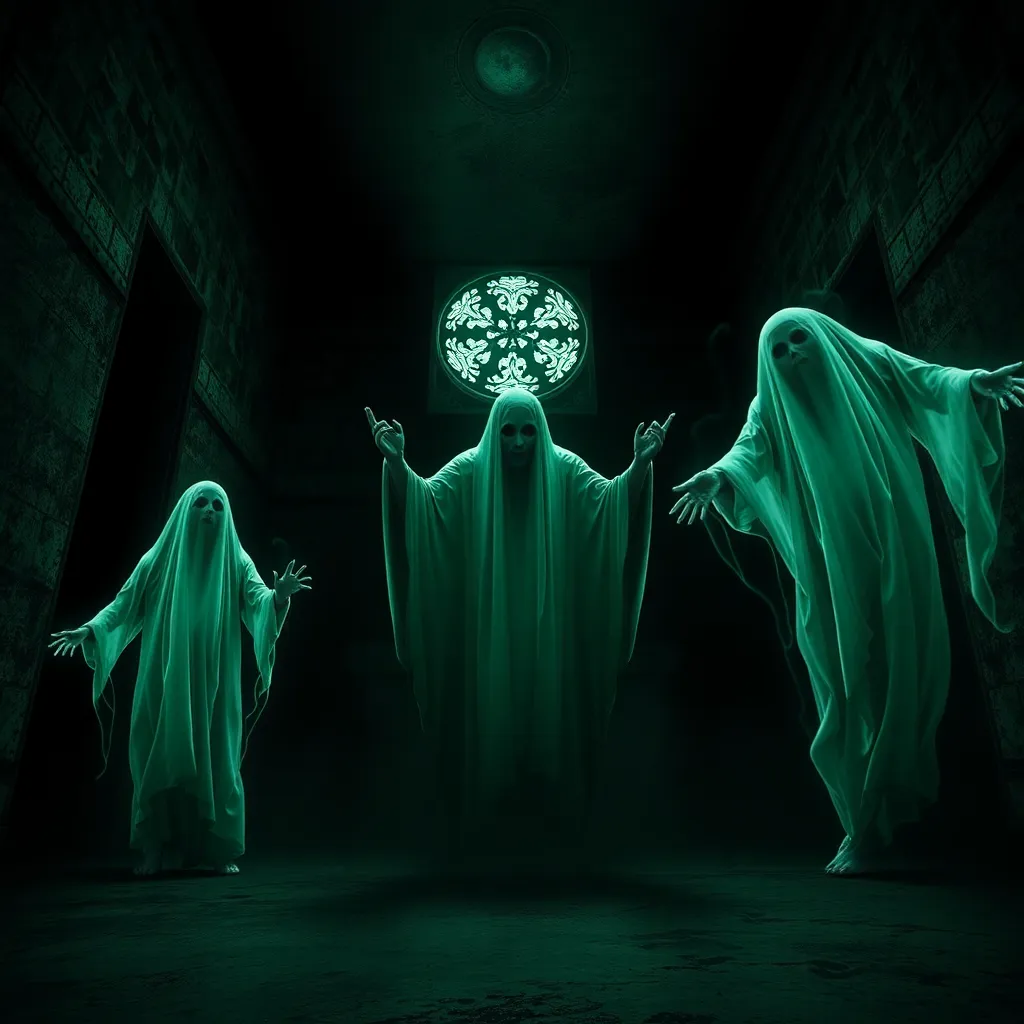The Ghosts of the Asylum: The Vengeful Spirits of the Mentally Ill
I. Introduction
Asylums have played a significant role in the history of mental health treatment, often serving as the first institutional response to the needs of those deemed mentally ill. These facilities, while initially founded with the intention of providing care and refuge, have frequently become synonymous with neglect, mistreatment, and horror. The concept of vengeful spirits, particularly those of the mentally ill, emerges from the tragic narratives of individuals who suffered in these environments. This article aims to explore the haunting tales and narratives surrounding asylums, delving into the historical, psychological, and cultural implications of these vengeful spirits.
II. Historical Context of Asylums
The evolution of mental health treatment has seen a significant shift over the centuries, from brutal and inhumane practices to more compassionate approaches. However, the history of asylums is marred by dark episodes of mistreatment and neglect.
A. The evolution of mental health treatment
In the early days, mental illness was poorly understood, often attributed to demonic possession or moral failing. Asylums emerged in the 18th century as a response to this ignorance, intended to provide care and shelter for those suffering from mental disorders.
B. The dark history of asylums: mistreatment and neglect
Unfortunately, many asylums devolved into places of horror, marked by overcrowding, inhumane conditions, and the use of harsh treatments such as lobotomies and electroconvulsive therapy without consent. These practices left deep psychological scars on the patients, many of whom died in isolation and despair.
C. Notable asylums and their infamous reputations
- Willard Asylum for the Insane (New York) – Known for its high patient mortality rate and the discovery of over 400 suitcases belonging to former patients.
- Trans-Allegheny Lunatic Asylum (West Virginia) – Infamous for overcrowding and brutal treatment methods, it is now a hotspot for ghost hunters.
- Danvers State Hospital (Massachusetts) – Closed in the 1990s, it has a reputation for hauntings linked to its tragic history.
III. The Psychological Impact of Confinement
The effects of confinement in asylums extend beyond physical imprisonment; they deeply affect mental health. The isolation experienced by many patients often exacerbated their conditions, leading to long-lasting trauma.
A. The effects of isolation on mental health
Isolation can lead to various psychological issues, including depression, anxiety, and exacerbation of pre-existing mental illnesses. Many patients, cut off from family and society, faced profound loneliness that haunted them even after their release.
B. Case studies of patients’ experiences
Accounts from former patients highlight the horror of their experiences. For instance, one patient described being locked away for years without contact, leading to a severe deterioration of their mental state. Such stories underscore the trauma endured by many, often resulting in feelings of resentment and anger that linger long after death.
C. The link between trauma and haunting narratives
The trauma experienced in asylums has contributed to the narratives of hauntings. Many believe that the unresolved pain and anger of former patients manifest as vengeful spirits, seeking acknowledgment of their suffering.
IV. Folklore and Legends Surrounding Asylum Ghosts
The haunting of asylums has given rise to rich folklore and legends, often reflecting societal fears and misunderstandings about mental illness.
A. Common themes in ghost stories related to asylums
- Restless spirits seeking closure
- Visions of patients reliving their torment
- Encounters with the staff who mistreated them
B. Examination of famous ghost tales from specific asylums
For example, the story of a nurse who allegedly committed suicide at the Trans-Allegheny Lunatic Asylum continues to haunt visitors, with reports of sightings and strange noises echoing through its empty halls.
C. The role of folklore in preserving the memory of the mentally ill
These ghost stories serve as a form of cultural remembrance, ensuring that the narratives of those who suffered are not forgotten. They provide a lens through which society can reflect on its treatment of the mentally ill.
V. Documented Hauntings and Paranormal Investigations
As the fascination with the paranormal grows, many asylums have become popular sites for ghost hunters and paranormal investigators.
A. Overview of popular haunted asylums
- Eastern State Penitentiary
- Waverly Hills Sanatorium
- Bedlam Hospital (Bethlem Royal Hospital)
B. Accounts from paranormal investigators and witnesses
Numerous paranormal investigations have documented strange occurrences, including cold spots, inexplicable sounds, and sightings of apparitions. Investigators often share chilling accounts of their experiences, further fueling interest in these sites.
C. Analysis of EVP (Electronic Voice Phenomena) and sightings
Evidence such as EVP recordings has sparked debates about the existence of spirits. Some recordings have captured voices that seem to express pain or anger, suggesting that these entities may be the lingering spirits of former patients.
VI. The Ethical Considerations of Exploiting Hauntings
While the allure of ghost stories and haunted asylums draws many, it raises ethical concerns regarding the portrayal of the mentally ill.
A. The impact of ghost tourism on the legacy of asylums
Ghost tourism can often trivialize the suffering of those confined within asylums, reducing their stories to mere entertainment. This commodification raises questions about respect and dignity for the memories of these individuals.
B. Ethical concerns regarding the portrayal of the mentally ill
Media portrayals that sensationalize mental illness can perpetuate stigma and misunderstanding, overshadowing the true experiences of those who lived in asylums.
C. The importance of respectful remembrance
It is crucial to approach the history of asylums with sensitivity and respect, honoring the memories of those who suffered while acknowledging the progress that has been made in mental health treatment.
VII. The Cultural Reflection of Mental Illness in Haunted Narratives
The intersection of mental illness and haunted narratives offers insight into societal attitudes and cultural beliefs.
A. The portrayal of mental illness in media and literature
Haunted narratives often reflect the stigmatization of mental illness, portraying the mentally ill as dangerous or otherworldly. This can shape public perception, influencing how mental health is addressed in society.
B. How ghost stories reflect societal attitudes towards mental health
Ghost stories can serve as a mirror, reflecting both fear and fascination with the unknown aspects of mental illness. They reveal the complexities of public attitudes, oscillating between empathy and fear.
C. The intersection of horror and empathy in understanding the past
By exploring these narratives, society can foster a more profound understanding of the experiences of the mentally ill, promoting empathy and compassion rather than fear.
VIII. Conclusion
In summary, the exploration of haunting narratives tied to asylums reveals a complex interplay of history, psychology, and culture. It is essential to remember the marginalized voices of the past, acknowledging their suffering while fostering compassion for the mentally ill today. As we reflect on these stories, let us strive to create a more understanding and empathetic society, ensuring that the lessons of history are not forgotten.



